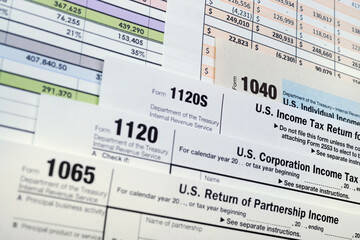The Hoosier state’s tax system makes it less competitive in capital-intensive industries such as manufacturing and life sciences, the Indiana Chamber of Commerce found in a report released Monday.
That’s compared with 14 neighboring and competitive benchmark states: Florida, Georgia, Illinois, Iowa, Kentucky, Michigan, Nevada, North Carolina, Ohio, Pennsylvania, Tennessee, Texas, Utah and Wisconsin.
Indiana has a higher effective tax rate for such businesses because it taxes personal property, according to the chamber. Property and business entity taxes affect those companies the most.
But the state is more competitive with headquarters because of its relatively low sales and business entity taxes—which are a bigger part of the tax burden headquarters typically pay.
“Indiana ranks fifth lowest among benchmark states for total effective business tax rate at 3.8%, well below the U.S. average of 5.0%,” said David Ober, senior vice president of business operations and finance, in a news release. “We are well-positioned as a leader in overall business tax competitiveness.”
“However, when you focus on specific industries for which Indiana is known, such as manufacturing and life sciences, the data shows opportunities for improvement,” he continued. “By addressing these areas, we can further sharpen our competitive advantage and continue to drive economic growth.”
The chamber’s report also examines state property, sales and individual income tax, along with local impositions.
Ernst & Young, an Indianapolis-based consultancy, conducted the study.
Other taxes
The chamber found that Indiana’s total tax burden—state and local—has been consistently less than the U.S. average.
Hoosier taxes per capita totaled $5,600 in the 2022 fiscal year, compared with about $7,100 nationally. Indiana’s combined tax burden was about 9.6% of personal income, lower than the 10.8% U.S. average and in the middle of the benchmark states.
But, the chamber said, Indiana “stands out” for getting a relatively high share of state and local revenue from individual income and sales tax, with a lower share from corporate income and other taxes. That’s without the option for a local sales tax.
Property taxes have been a major Hoosier constituent complaint and political problem. They provided 23% of Indiana’s state and local revenue—lower than the U.S. average of 29% and lower than 11 benchmark states.
“Our state’s tax climate is the result of sustained efforts over decades to build a strong, business-friendly environment,” chamber President and CEO Vanessa Green Sinders said.
“Indiana is well-positioned among our peers to attract capital investment and support long-term economic growth,” she said. “The data from phase one of this study highlights key opportunities for improvement, which will help us gain a competitive edge moving forward.”
The study is the first in a two-part examination of Indiana’s tax structure in comparison to the benchmark states; phase two is expected to offer tax reform recommendations.
“This study marks the first step in a larger effort,” Sinders said.
“As we move forward, we will meet with key lawmakers, administration officials and local leaders across Indiana to ensure that the findings from phase one are used to drive policy decisions,” she added. “Our goal is to work collaboratively to shape policies that strengthen Indiana’s economic foundation and keep us ahead in the competitive landscape.”
Legislators will enter the biennial budget-writing session in January. Lawmakers are also considering long-term tax reform as part of a two-year task force.
The tax study was informed by consultations with the chamber’s Tax Research Advisory Committee, which includes representatives from key business sectors, tax policy experts, consultants, some state agencies and economic development professionals.
The chamber identified Ambassador Enterprises and AES Indiana as lead investors in the project. Other contributors were Maple Leaf Farms, bp America, dormakaba Americas, Cleveland-Cliffs Inc., Al & Kathy Hubbard, OneMain Financial and CountryMark.
By Leslie Bonilla Muñiz — The Indiana Capital Chronicle is an independent, not-for-profit news organization that covers state government, policy and elections.





